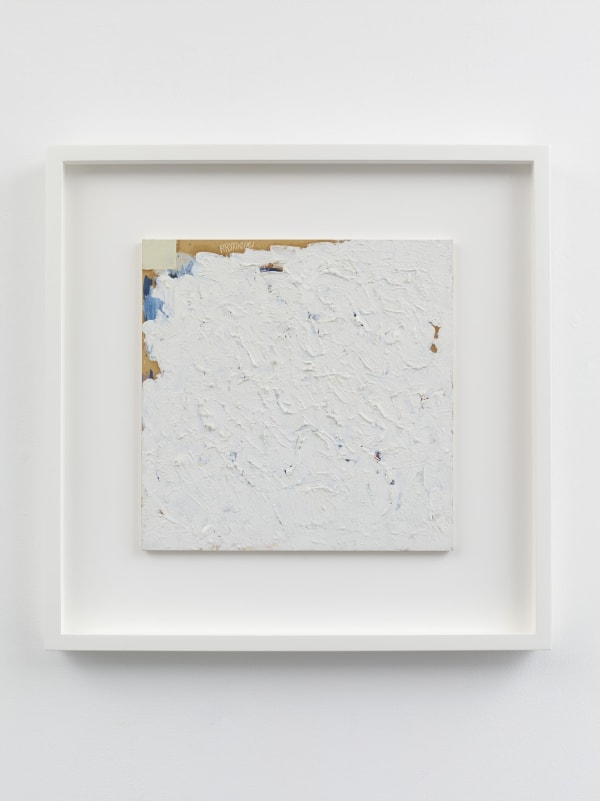Brancusi: Pioneer of American Minimalism
-
-
Paul Kasmin Gallery is proud to present Brancusi: Pioneer of American Minimalism, on view at 515 West 27th Street from May 7 – July 10, 2015. The exhibition is an articulation of the artist’s immense influence on the first generation of American Minimalists and will include historically significant works by Carl Andre, Dan Flavin, Donald Judd, Ellsworth Kelly, Robert Ryman and Frank Stella, installed in proximity to Brancusi’s groundbreaking works Le Coq and Jeune Fille Sophistique, generously loaned from the Brancusi Estate collection.
-
Constantin Brancusi’s (1876 – 1957) sculptures ignited a crucial shift in the tradition of American and European sculpture by distilling representational forms down to their most essential elements. In Le Coq, the multiple points of a rooster’s comb are pared down to a repetitive, geometric facsimile. The bronze edition included in this exhibition was cast from an early walnut iteration of Le Coq from 1924, now in the permanent collection of The Museum of Modern Art, New York, NY.
The geometric repetition seen in Le Coq, and later on a grand scale in Brancusi’s triumphant Endless Column, is a recurring compositional element in the works in this exhibition.
Brancusi’s influence extended well beyond sculpture, as explained by museum director and Brancusi expert Pontus Hulten is his 1983 essay, “Brancusi and the Concept of Sculpture.” Among the painters of that generation, Frank Stella was drawn most to Brancusi’s simplicity of form. The origins in Stella’s early work are only comprehensive by his study of the asymmetry and superposition of elementary forms as seen in Brancusi’s sculpture.” This notion is exemplified in Stella’s D. Scramble: Ascending Green Values/ Ascending Spectrum, 1978.
A focal point of the exhibition is Ellsworth Kelly’s vast thirty-eight foot, four-panel sculpture entitled Eastmore Mural, executed in 1957, the year of Brancusi’s death. The work was most recently was on long-term loan to the Frances Lehman Loeb Art Center at Vassar College. The curvilinear nature of the recurring forms, as well as the playful symmetry of the composition, recall Brancusi’s Jeune Fille Sophistique, or Portrait of Nancy Cunard, an early wood variation of which was also exhibited at the Guggenheim Museum in New York just a few years earlier in 1955-56, in the largest retrospective of Brancusi’s work to be staged in his lifetime.
Brancusi: Pioneer of American Minimalism will run concurrently with Scott Burton at 297 Tenth Avenue. Burton, also profoundly influenced by Brancusi, curated the inaugural “Artist’s Choice” exhibition, Burton on Brancusi at the Museum of Modern Art, New York, 1989, which considered the significance of Brancusi’s work in relation to contemporary art of the time and specifically to his own innovations in functional sculpture.
-
Works
-
Join our Newsletter
* denotes required fields
We will process the personal data you have supplied in accordance with our privacy policy (available on request). You can unsubscribe or change your preferences at any time by clicking the link in our emails.
-
Explore
-

Robert Indiana:
February 27 – March 29, 2025 509 West 27th Street, New York
The Source, 1959–1969Kasmin presents Robert Indiana: The Source, 1959–1969, a focused survey of the transformative decade in which Indiana established his unique artistic language, achieving wide recognition and cementing his place as an icon of American art. Featuring 20 works drawn exclusively from the artist’s personal collection as endowed by Indiana to the Star of Hope Foundation, the exhibition includes an example from the artist’s first edition of LOVE sculptures, conceived in 1966 and executed between 1966—1968, and a vitrine display of archival materials including some of the artist’s journals. This exhibition marks Kasmin’s first collaboration with the Star of Hope Foundation, which was established by the artist in his lifetime, and the gallery’s eighth solo exhibition of work by Indiana since 2003. -

Pablo Dávila:
February 27 – March 29, 2025 297 Tenth Avenue, New York
Why Did You Take My Watch?The first solo exhibition of Mexico City-based artist Pablo Dávila (b. 1983), Why Did You Take My Watch? features new works that iterate Dávila’s research-based process in various media. Employing a visual language to encapsulate complex systems, theories and ideas, Dávila’s works offer poetic reflections on the perception of time and space.
-
-
Explore
- Diana Al-Hadid
- Alma Allen
- Theodora Allen
- Sara Anstis
- Ali Banisadr
- Tina Barney
- Judith Bernstein
- JB Blunk
- Mattia Bonetti
- William N. Copley
- Cynthia Daignault
- Ian Davenport
- Max Ernst
- Liam Everett
- Leonor Fini
- Barry Flanagan
- Walton Ford
- Jane Freilicher
- vanessa german
- Daniel Gordon
- Alexander Harrison
- Elliott Hundley
- Robert Indiana
- Lee Krasner
- Les Lalanne
- Matvey Levenstein
- Lyn Liu
- Robert Motherwell
- Jamie Nares
- Nengi Omuku
- Robert Polidori
- Jackson Pollock
- Elliott Puckette
- Alexis Ralaivao
- George Rickey
- James Rosenquist
- Mark Ryden
- Jan-Ole Schiemann
- Joel Shapiro
- Bosco Sodi
- Dorothea Tanning
- Naama Tsabar
- Bernar Venet






![Constantin Brancusi, Jeune Fille sophistiquée (Portrait de Nancy Cunard) (Sophisticated Young Lady [Portrait of Nancy Cunard]), 1928–32](https://artlogic-res.cloudinary.com/w_600,c_limit,f_auto,fl_lossy/artlogicstorage/pkg/images/view/c7cf87af7f968cfa8be2db6146e026dff21979e1/kasmingallery-constantin-brancusi-jeune-fille-sophistiqu-e-portrait-de-nancy-cunard-sophisticated-young-lady-portrait-of-nancy-cunard-1928-32.jpg)



